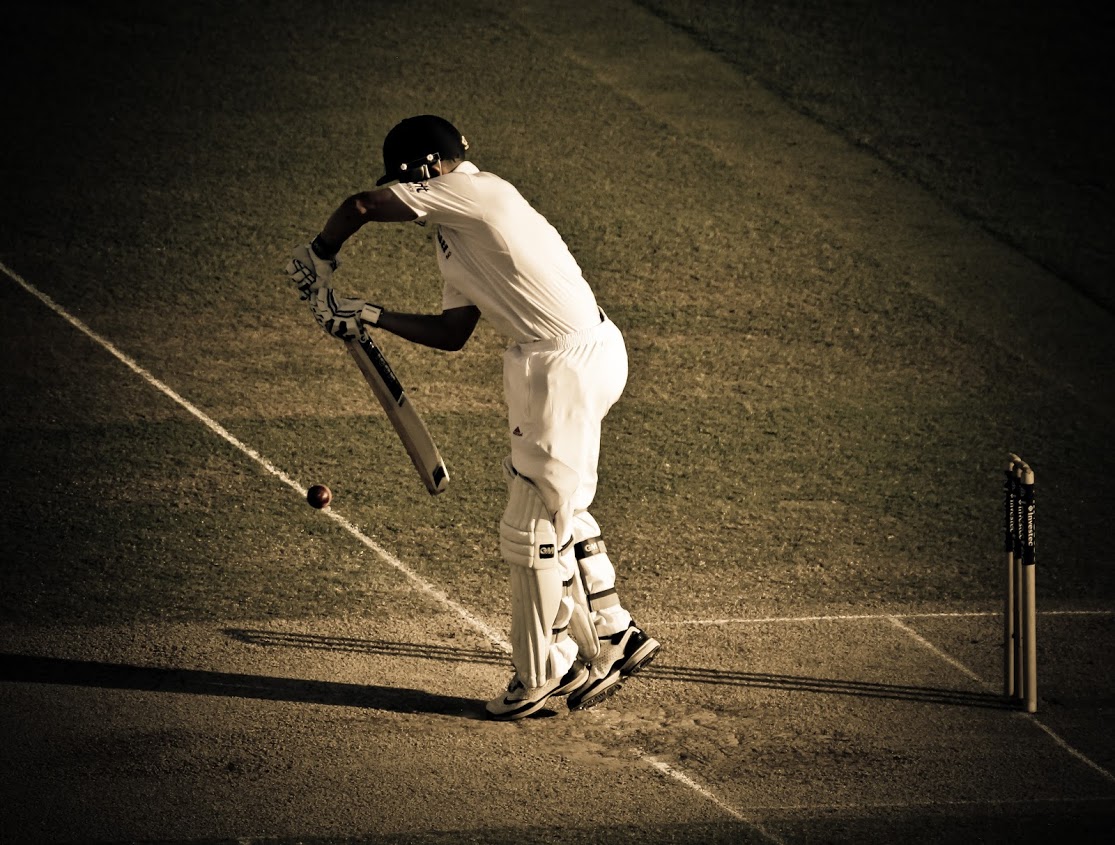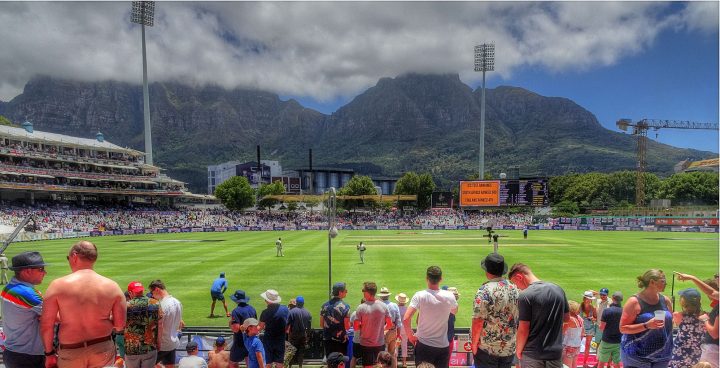We now know more about which English grounds will host international fixtures during the seasons 2017-19. This is the process which the ECB call the ‘major match awards’, the outcome of which they announced yesterday.
What’s the significance? For a start it’s instructive to see the geographical spread of the matches – and which ones you could feasibly attend (if you (a) have the inclination and (b) have the money).
A huge amount was at stake for the counties, who tendered bids to stage ‘packages’ of fixtures. Most of them – both the traditional and new international grounds – have invested tens of millions in upgrading their facilities, in some cases mortgaging themselves to the brink of disaster. Yesterday, for those counties awaiting news, was the equivalent of getting their A-Level results.
How much the counties pay to host games, and exactly how they bid, is opaque, ever-changing, and the source of long-running controversy. The staging fee is a key driver of ticket prices, and varies by package according to exact composition, plus the attractiveness of opposition and scheduling (eg, an Ashes test will cost far more than Bangladesh in May).
As far as I can make out, the ECB do not release precise figures. What a surprise. My understanding is that on average the ECB charge counties between £1 and £2 million to host a test. When the last set of awards were made, in 2011, the Guardian reported that:
The packages announced on Wednesday will earn the ECB a combined total of around £32m in staging fees. It is estimated that the MCC [for Lord’s] spent around £12m on the Premium Package.
This matters for two reasons. The more the counties must pay the ECB, the more they have to pass on to you in ticket prices. And if you support one of those nine test-hosting counties, you don’t want to see your club leverage itself into bankruptcy.
There is a complex and messy political dimension to all this. On the one hand, Giles Clarke is a greedy sod who will screw as much cash as he can out of any situation. He probably puts a paywall on his own holiday snaps. But on the other, he relies on the counties for re-election – which is due in March.
So a deal has been struck. As Nick Hoult reports in the Telegraph:
Under pressure from the counties the ECB tweaked its staging agreements for the 2017-2019 period. Grounds and the ECB will share ticket revenue on matches which are at risk of not selling out, thereby ensuring the county does not take on all losses from poorly attended matches.
Clarke himself says:
A significant amount of work was carried out with the ECB executive and the first-class counties to ensure that these awards are made on a new financial basis which involves the share of risk between the ECB and the grounds. It means that grounds are incentivised to sell out while providing the best possible spectator experience.
Let’s look at the detail of the scheduling. Some of the information published yesterday was already known. The headlines are that Edgbaston and Old Trafford will get Ashes tests in 2019. Lord’s, Headingley, and the Oval were confirmed previously. Trent Bridge, unusually, misses out, as does – dashing their fervent hopes – Hampshire.
Overall the pattern is of drawing back from the outliers and focusing on the traditional host grounds. The ECB’s logic – and in fairness they have a point here – is to avoid swathes of empty seats by concentrating on major population areas. But that’s bad news for spectators who live in the south west and Wales, the south, and the far north. It’s also grim news for the likes of Durham and Hampshire, who have piled so much investment into their grounds.
It’s an opportunity for us to look at the bigger picture of where England are playing – and who against. Adding in the schedules for 2015 and 2016, we can see the wider landscape over five years.
*********************************************
Early-season series – two tests v New Zealand:
– Lord’s and Headingley.
NZ ODIs:
– Edgbaston. Oval, Ageas Bowl, Trent Bridge, Durham. IT20: Old Trafford.
Prime-summer series – five tests v Australia
– Cardiff, Lord’s, Edgbaston, Trent Bridge, Oval.
Aus ODIs:
– Ageas Bowl, Lord’s, Old Trafford x 2, Headingley. IT20: Cardiff.
Early-season series – three tests v Sri Lanka:
– Lord’s, Durham, Headingley.
SL ODIs:
– Trent Bridge, Cardiff, Edgbaston, Oval, Bristol, IT20: Ageas Bowl.
Prime-summer series – four tests v Pakistan
– Lord’s, Old Trafford, Edgbaston, Oval.
Pak ODIs:
– Lord’s, Trent Bridge, Cardiff, Ageas Bowl, Headingley. IT20: Old Trafford.
West Indies ODIs:
– Bristol, Old Trafford, Oval, Ageas Bowl, Trent Bridge. IT20: Durham.
SA ODIs:
– Durham, Headingley, Lord’s. IT20s: Cardiff, Ageas Bowl, Taunton.
Champions Trophy
– Cardiff, Edgbaston, and Oval.
Women’s World Cup
– Final at Lord’s (other venues yet to be announced).
June-August series – four tests v South Africa:
– Lord’s, Old Trafford, Oval, Trent Bridge.
August-September series – three tests v West Indies:
– Edgbaston, Headingley, Lord’s.
2018
Early-season series – two tests v Pakistan:
– Headingley, Lord’s
No ODIs v Pakistan.
ODI series v Australia:
– Cardiff, Durham, Old Trafford, Oval, Trent Bridge. IT20: Edgbaston.
Prime-summer series – five tests v India:
– Edgbaston, Lord’s, Oval, Ageas Bowl, Trent Bridge.
India ODIs:
– Bristol, Headingley, Lord’s, Old Trafford, Trent Bridge. IT20: Cardiff.
2019
No early-season test series.
ODI series v Pakistan:
– Bristol, Durham, Headingley, Oval, Southampton. IT20: Cardiff.
World Cup
– Lord’s (final), Edgbaston and Old Trafford (semi-finals), Oval (opening game), Bristol, Cardiff, Durham, Headingley, Southampton, Taunton, Trent Bridge (group games)
Test series v Australia:
– Edgbaston, Headingley, Lord’s, Old Trafford, Oval.
No ODI series v Australia.
*********************************************
Lots to talk about there. Let’s do some adding up – and for simplicity we’ll just look, for the time being, at test matches.
Venues – all tests
– Lord’s 9 (27%)
– Headingley 5 (15%)
– Cardiff 1 (3%)
– Edgbaston 5 (15%)
– Trent Bridge 3 (9%)
– Oval 5 (15%)
– Durham 1 (3%)
– Old Trafford 3 (9%)
– Ageas Bowl 1 (3%)
Venues – prime-summer tests
– Lord’s 6 (23%)
– Headingley 2 (7%)
– Cardiff 1 (4%)
– Edgbaston 5 (19%)
– Trent Bridge 3 (12%)
– Oval 5 (19%)
– Durham 0 (0%)
– Old Trafford 3 (12%)
– Ageas Bowl 1 (4%)
Tests by region
– London 14 (42%)
– North (Leeds and Manchester) 8 (24%)
– SW and Wales 1 (3%)
– Midlands (Birmingham and Nottingham) Edgbaston 8 (24%)
– North east (Durham) 1 (3%)
– South (Southampton) 1 (3%)
(I appreciate that my categorisation of regions is subjective. Others might group either Durham or Nottingham with Leeds and separate Manchester. By the same token, Old Trafford, Headingley, Nottingham and Birmingham are all relatively close to each other. And Southampton is not far from London by train).
Tests by opponent
– New Zealand 2 (6%)
– Australia 10 (30%)
– Sri Lanka 3 (9%)
– Pakistan 6 (18%)
– West Indies 3 (9%)
– South Africa 4 (12%)
– India 5 (15%)
– Bangladesh 0 (0%)
– Zimbabwe 0 (0%)
Plenty to chew on there. Any five-year span will always be skewed by your starting point in the cycle – and in this case there are two Ashes series in the sample group. Nevertheless a few trends are clear.
45% per cent of England’s home tests during the next five years will be against Big Three opposition (and there was also a five-test series versus India in 2014, plus the Ashes in 2013). That’s not even including the seemingly irrelevant five-match ODI series against Australia in 2018.
There are only four tests with South Africa, and bearing we mind we had only three against them in 2012, that makes a total of seven home tests in eleven years against one of the genuine superpowers of world cricket. Why do India play a five test series here, but not the Proteas? And do neither Bangladesh nor Zimbabwe (political sensitives with the latter notwithstanding) deserve a single test between them?
In terms of overseas tests between now and 2019, England will play, three ‘in’ Pakistan, four in South Africa, two in Bangladesh, five in India, five in Australia, two in New Zealand, three in Sri Lanka, and three in West Indies.
Turning to the geography. Even as a born and bred Londoner, it strikes me as ludicrous that more than forty per cent of all tests, in this sample period, take place in the capital. Wales, the south west, the north east, and the south, all combined, receive only ten per cent.
Looking through the whole list, perhaps the most striking thing is the sheer quantity of cricket: 33 tests, 33 ODIs, 11 IT20s, a Champions Trophy and a World Cup, in five years. And that’s just at home. Will the players even survive it? Will the public have enough appetite? And will we be able to afford the tickets?









